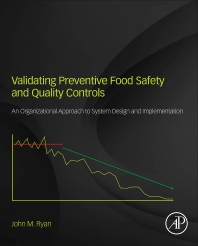Riboflavin testing is an evaluation method to ensure spray device(s) effectively apply cleaning solutions for clean in place (CIP) of process vessels. This procedure is only a spray device coverage test and should not be considered a test of vessel cleanability.
3-A Sanitary Standards define CIP as “the removal of soil from product contact surfaces in their process position by cleaning solely by circulating, spraying or flowing chemical solutions and water rinses onto and over the surfaces to be cleaned.”
Hygienic process industries utilize spray devices, installed in the interior of vessels, to apply CIP detergent solutions and water rinses for removal of process residues and bioburden to render a clean surface for subsequent use. The effectiveness and repeatability of cleaning procedures rely on ensuring the cleaning solutions are delivered to the spray device with repeatable flow rate and pressure.
Riboflavin testing can help to ensure that vessel sprays can apply cleaning solutions into and onto difficult-to-clean surfaces. These could include baffles; mixer and agitator blades, including underside surfaces; access ports; and certain tank nozzles that have narrow annular spaces due to instrumentation.
It is important that any surfaces that are evaluated for spray coverage are free of fabrication-related residues such as oils and adhesives from protective coverings. A simple water break test, performed using a laboratory squirt bottle to apply deionized (DI) water onto vessel surfaces, can ensure clean, oil-free conditions. If the DI water forms “rivers” or droplets instead of freely spreading over the surface, further cleaning is indicated.
Riboflavin (vitamin B2) in dilute solution with water (0.015-0.025% weight/weight) is fluorescent under UV-A light in the range of a 365-nanometer to 650-nanometer wavelength. Optimal observation uses UV-A with intensity of 4,000 microwatts per square centimeter at a distance of 15 inches (38 centimeters).
Thus, riboflavin solutions can be used as indicators for effectiveness of coverage by spray devices. Riboflavin is commonly sourced in dry powder form, and complete dissolution in water can be accomplished by heating to at least 70° Celsius (158° Fahrenheit) with light to moderate mixing.
Solution application
The riboflavin test solutions are often applied to interior vessel surfaces using a clean garden-type pump sprayer. This includes all nozzles and interior features as noted above. Without allowing the riboflavin solution to dry, the vessel is subjected to one or more 30-second-duration freshwater rinses using the CIP System and vessel spray device. Complete drainage is required between rinses. This helps prevent atomizing and redepositing riboflavin droplets by ricochet of spray streams.
Time for inspection
Following the final rinse and drain time, vessel surfaces are inspected using a portable UV-A light source. Any riboflavin residues noted by appearance of a yellow-green fluorescence are indicative of a potential spray device failure to adequately rinse riboflavin from that surface.
Care is required to prevent false positive results from opening the vessel access cover(s) or nozzles and allowing residual riboflavin to flow from fittings and gaskets. UV-A light is useful in determining if gaskets and seals are not completely closing against mating surfaces. No amount of rinsing can remove residues from cracked gaskets or loose fittings.
Final inspections often use photos of areas with residual riboflavin to document a failure of spray coverage.








